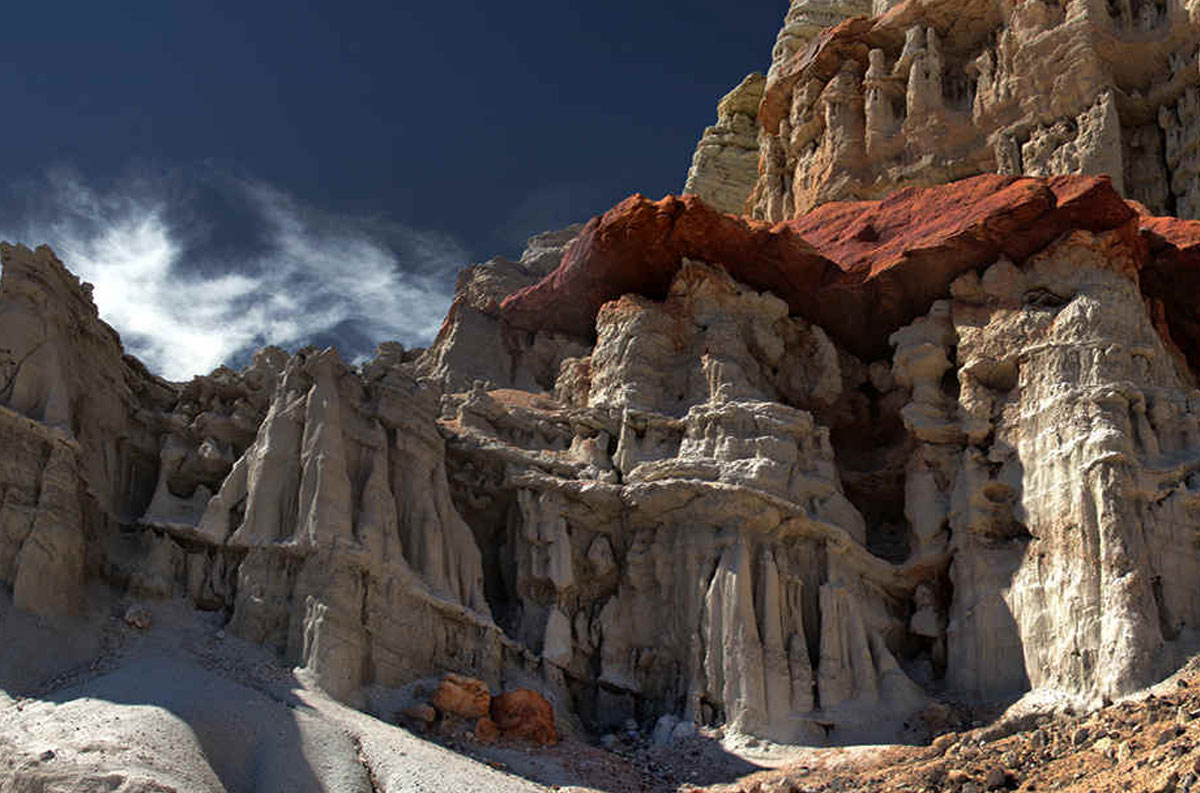Historically, the area was once home to the Kawaiisu Indians, who left petroglyphs in the El Paso mountains and other evidence of their inhabitation. The spectacular gash situated at the western edge of the El Paso mountain range was on the Native American trade route for thousands of years. During the early 1870s, the colorful rock formations in the park served as landmarks for 20-mule team freight wagons that stopped for water. About 1850, it was used by the footsore survivors of the famous Death Valley trek including members of the Arcane and Bennett families along with some of the Illinois Jayhawkers. The park now protects significant paleontology sites and the remains of 1890s-era mining operations, and has been the site for a number of movies.
After wet winters, the park's floral displays are stunning. The beauty of the desert, combined with the geologic features make this park a camper's favorite destination. Wildlife you may encounter includes roadrunners, hawks, lizards, mice and squirrels.
Camping
Camping in developed sites only in Ricardo Campground. The campground is tucked up against the base of dramatic desert cliffs, with 50 primitive campsites, potable water, pit toilets, fire rings, and tables. Bring your own firewood, or purchase it at the visitor center. There are no RV hook-ups or showers. A maximum of 8 people is allowed per site (there are no group sites).
Camping is first-come, first served; there is no reservation system. The campground can fill up on weekends in the spring and fall, especially if the weather is nice or on holiday weekends, so arriving on a Thursday evening or Friday morning is recommended.
Camping is $25 per night per site, which includes parking for one vehicle per site, or $23 per night with seniors (62 years old or older). Additional vehicles are $6 each. There is a 30 foot maximum on RVs. Self-registration/payment is required before setting up camp or parking. Vehicles (including OHV) must be parked within the rock lined areas provided at each campsite. No horses or livestock allowed in the campground. Quiet hours are 10 pm to 6 am; generators must be off from 8 pm to 10 am.
Overnight parking in the day-use lot is not permitted.
Day Use
Miles of trails meander through the dramatic landscape of the park, and hiking is an intimate way to experience the desert. Use desert safety precautions- bring twice as much water as you think you need, and layered clothing for sudden fluctuations in temperature.
Shaded picnic tables are available first-come, first served in the day-use area adjacent to the Visitor Center. The day-use parking lot and picnic area, open sunrise to sunset, is $6 per vehicle per day.
Equestrian Use
Horses are allowed on all roads in the park, with the exception of seasonally closed areas . Horses are not allowed in the campgrounds, however equestrian day use out from the Red Cliffs parking area is still allowed, but no overnight camping.
Off-Highway Vehicle Recreation
All licensed vehicles (street legal and OHV with green stickers) may travel on the primitive (dirt) road system within the park. All drivers of vehicles (street legal and OHVs) within the park must be licensed. Please watch for Closed Route signs and check maps for open routes (please do not create new routes). Drinking and driving laws apply both on the paved and primitive dirt roads.
Location/Directions
The park is 25 miles northeast of Mojave on Highway 14, near Cantil. Go west 1/4 mile on Abbott Drive. Signage indicating the turnoff is clearly visible on Highway 14.
The park is 120 miles north of Los Angeles, via Interstate 5 and Highway 14.

